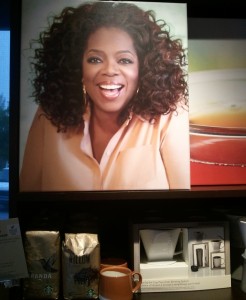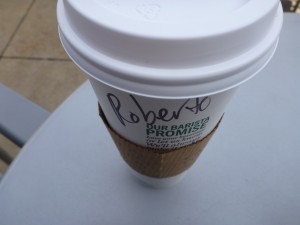Starbucks latest step in it’s effort to remain the hippest fast-food joint on the planet is its “Race Together” campaign, unveiled in Mid-March. Ostensibly designed to help foster an open discussion about racial issues, it has been widely criticized and ridiculed for its plan to have its baristas “voluntarily write #RaceTogether on Starbucks cups to stimulate conversation and compassion regarding race in America.” The campaign has been variously described as trivializing a serious issue, an annoyance to barista and customer alike, and opportunistic.
Days later the company abruptly pulled the plug on part of the initiative, the writing on the cups, but continued forward with the rest of the campaign, including placing a special section in the March 20 edition of USA Today. The insert included demographic information tracing the racial makeup of the United States, results from studies of racial bias, and a quiz named “Your Race Relations Reality Check” that comes across somewhat as “How Racist Are You?” Featured at the top of the insert is a large photo of Starbucks CEO Howard Schultz presiding over a meeting of Starbucks employees discussing race. A video on the Starbucks website excerpts that meeting and the corporation’s annual meeting on March 18. Prominently featured in the video are Schultz speaking (and reacting) and many spoken tributes to the corporation for the initiative.
Starbucks has put a lot of effort into portraying itself as a socially responsible entity. It has promoted its “global responsibility” policy, including community involvement, limiting its impact on the environment, and ethical sourcing. This current effort, like the “Come Together” campaign of 2013, attempts to associate good-doing not just with the Starbucks brand, but also with the experience of purchasing something in their stores. Buy a $7 Frappuccino with an extra shot of social responsibility and be on your way. All of this is designed to be seen as good for humanity, but for Starbucks it is good for business.

produce and sell something called “Teavana Oprah Chai Tea” – the press release gushed that the tea “was personally developed by Oprah Winfrey in close collaboration with Teavana’s leading tea teaologist”. (Really? Dude, that’s so cool! What’s a “tea teaologist”?) Starbucks promised a donation with each product sold to one of the charities Oprah supports. Winfrey and Schultz – never the ones to shy away from publicity, especially when doing charitable works – are natural partners.
Many critics of the “Race Together” campaign have pointed out that Starbucks has a relatively low number of stores in areas with high minority populations. Contrast their record with Walmart’s (a decidedly uncool place to shop for many Starbucks customers), which has a long history of opening stores in disadvantaged areas, hiring local people, and promoting from within the company.
While the “Race Together” initiative may seem risky in light of the reaction by many of its customers and observers, it’s not as daring as it seems. A large part of its customer base is urban, upscale, socially conscious, and young. Holding on to this demographic is key to its future expansion and profitability. Starbucks has always pursued a hip vibe in its stores, from its music selection to its furnishings, emulating the local coffee shops that served an artsy, intellectual crowd before being bulldozed out of existence by the Starbucks behemoth.
And a corporate behemoth it is. Starbucks has doubled its number of stores in the past 10 years, with more than 21,000 worldwide today. With almost $13 billion in sales in 2014, Starbucks is now the second largest restaurant chain in U.S. sales, behind only McDonalds. Schultz has been the major force in Starbucks’ resurgence since returning to take the reins of the company in 2008. His performance earned him $21 million in Starbucks’ last fiscal year, and his net worth is heading toward the $3 billion mark. Which is not bad for a chief social-responsibility officer.
(Authors Note: This article was written while enjoying a delicious hand-crafted beverage at a Starbucks in Washington, DC.)
 Thought Widget get learnt
Thought Widget get learnt




